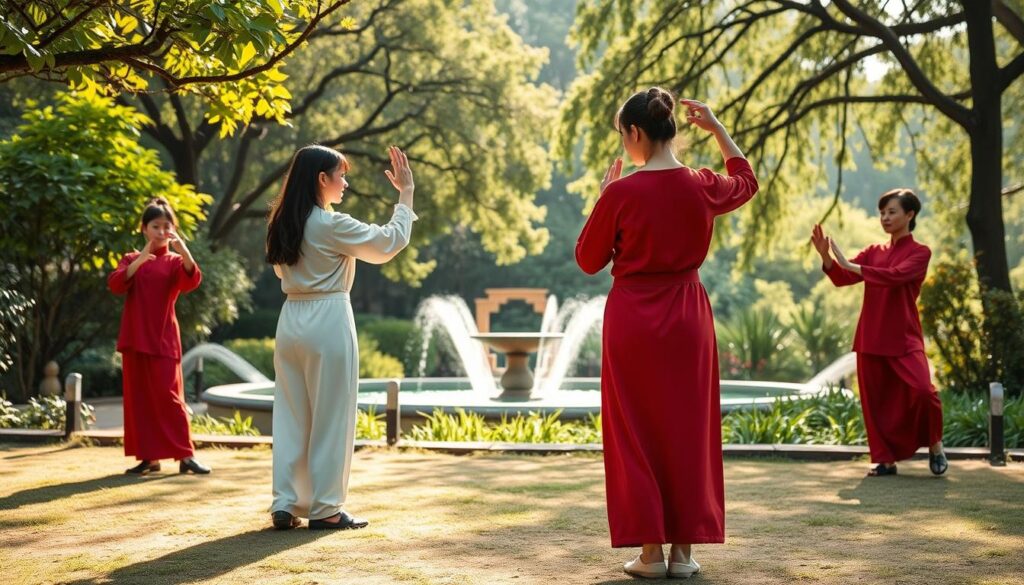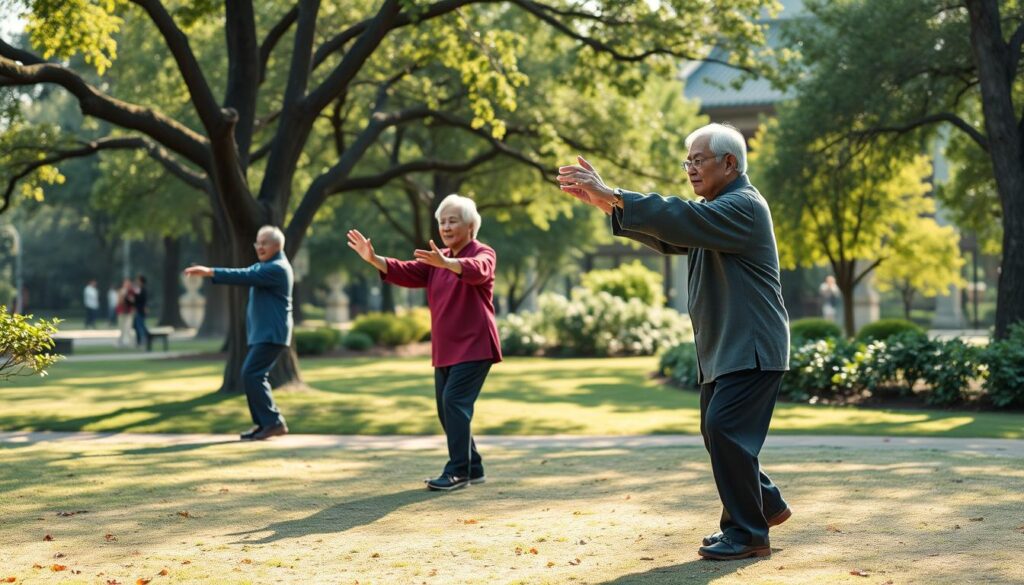The purpose of Tai Chi is to balance the body, mind, and spirit. This enhances both your emotional and physical well-being. You achieve this balance by enabling your qi, or life energy, to adequately flow.
Three primary techniques or components of Tai Chi enable you to do this:
Movement
Meditation
Deep Breathing
Movement
The movements of Tai Chi strengthen your muscles and bones and improve flexibility and balance. For those who have coordination problems, Tai Chi will help to improve coordination.
The practice is low impact, meaning that you do not experience excessive force on the joints. Rather, you are building strength and stamina through gentle, slow movements.
You will use all joints and groups of muscles, which contributes to a well-rounded, full body workout.
During class, you will often hear “tuck your tail bone under.” This is meant to flatten your back and align your spine, but many people often thrust their pelvis too far forward, creating an inward arch of the spine.
Alternatively, people who slouch create an outward arch. This step proves difficult for many, so it is important to practice this technique diligently and remain patient as you learn.
Many of the movements in Tai Chi mimic nature, and the beings found in it as reflected by the names of the forms, for example Grasp The Birds Tail or Wave Hands Like Clouds. It is believed that by being one with nature, the practitioner can gain a unity with the universe, and become one with it, leading to a unique state of meditation and a heightened sense of enlightenment.
While going through the movements of Tai Chi, the focus is to align body, mind, and spirit. This is easier said than done. It starts with focusing on how the mind controls each movement of the body and how the spirit flows through the body in the process, from the top of the head to the tips of the fingers and toes.
Meditation
The energy generated and directed by your body through movement in turn generates the energy within your mind. If the qi within your body is agitated, then your mind will also be agitated. If the qi in your body is calm and balanced, then your mind will be calm as well. Meditation can be used to channel energy.
There are two purposes for meditation in Tai Chi:
To Relax The Nerves
To Obtain Enlightenment
These two very different purposes require different skills.
Beginner and intermediate-level Tai Chi students should seek to master the skills for relaxing the nerves. This involves calming and centering the mind. Allow your Tai Chi instructor to guide you through the meditative process as you build such skills.
More advanced Tai Chi students should work towards enlightenment. This goes much deeper than simply calming the energy in your mind and body. It involves achieving an awareness that permeates into your everyday life and sense of self.
Deep Breathing
Deep breathing enables you to release toxins from your body while inhaling fresh air and releasing stress. The capacity of your lungs will grow and your blood circulation will improve, heightening alertness.
This is another method for focusing your mind as well as cleansing your spirit. Your instructor should guide you through deep breathing exercises during class, in which you “open” and “close” yourself through movement, breathing in and out with the movement.
To truly master the technique, you should also practice daily at home. You can find Tai Chi deep breathing exercises online, as well as videos demonstrating how to do it.
The deep breathing element of tai Chi promotes the health of and regulates the respiratory system that helps to treat various respiratory ailments, including asthma, bronchitis, and emphysema.
By practicing deep breathing in conjunction with meditation and physical movement, you learn to master the flow of your qi (internal energy).



